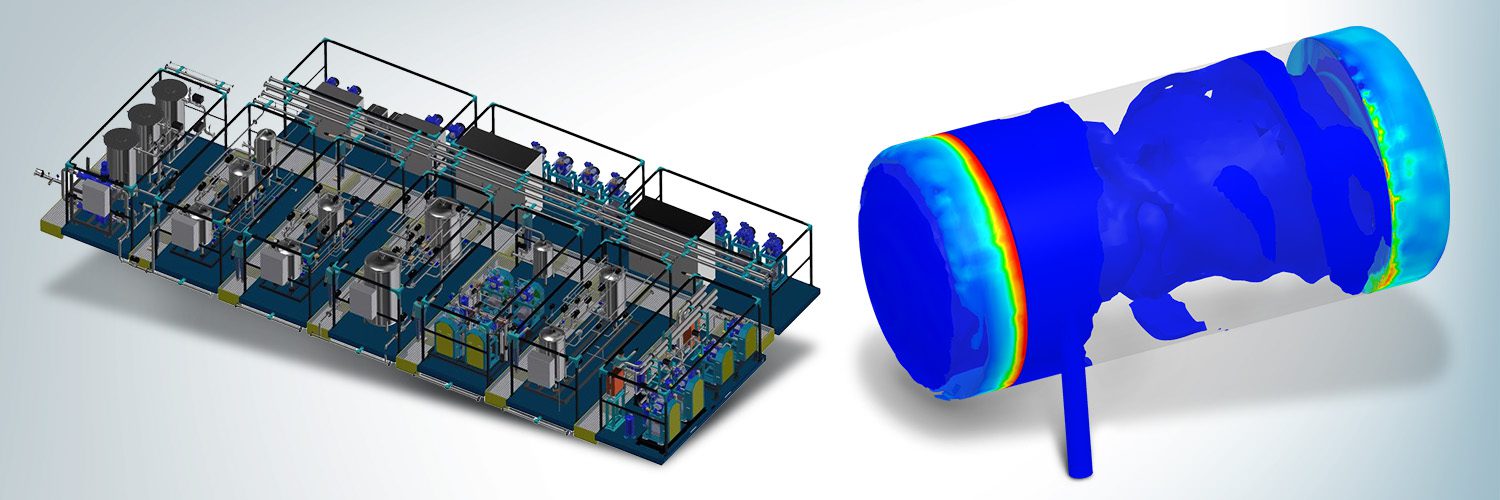
Cryo Pur designs, manufactures, markets, and operates a range of equipment for cryogenic solutions for gas separation and liquefaction to transform biogas into bio-GNL and liquid bio-CO2 for the energy, transport, and industrial sectors. Cryo Pur technology is the result of 15 years of research and development work by Denis Clodic and his team at Mines ParisTech in the field of cryogenic CO2 capture. Technological innovation is at the heart of Cryo Pur’s project — protected by eight worldwide patents. Cryo Pur’s technology provides practical answers to the challenges of the biogas industry and pushes back the limits of energy efficiency thanks to a state-of-the-art process developed using engineering simulation.
Cryo Pur effectively produces renewable energy that can be substituted for diesel oil. Liquefaction of biogas and more broadly speaking, biomass has long been a bottleneck to unlocking its potential for the very energy-intensive sectors such as agriculture, transport, industry, and the power sector. Biomethane and bio-GNL are renewable energies derived from organic waste and reduce greenhouse gas emissions by over 80% compared to diesel. Their use is key in the energy transition towards a decarbonized future. Cryo Pur has innovated extensively and built leading circular economy principles into its development and operations.
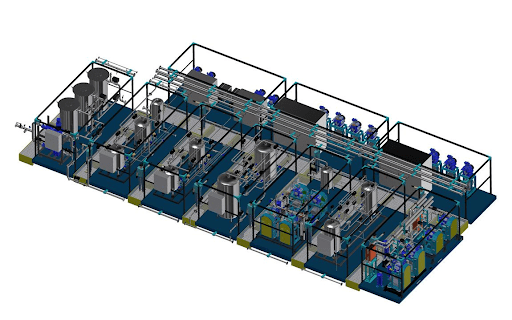
The Cryo Pur technology allows for the treatment of biogas from all types of organic waste including agricultural, industrial, and landfill waste as well as municipal sewage. The Cryo Pur technology opens up new opportunities for the biogas industry such as:
In addition to bio-GNL, the Cryo Pur technology produces a very high-purity liquid bio-CO2, which allows its sale for many applications (e.g., dry ice, greenhouses, and refrigerated transport) thus improving the economic and environmental payback for its investment. It is considered a major solution to many problems for municipalities and industries to reach their carbon emissions reduction goals.
Developing this technology has taken decades of research and development. The cryogenic process and the nature of high-pressure fluid processes mean that careful mechanical calculations are needed to optimize the plant and equipment for safety, durability, and longevity. The engineering team at Cryo Pur has made extensive use of engineering simulation using SimScale including the development and installation of one of the first large-scale bio-LNG plants in the world.
We work with large and complex CAD models of plant assemblies. With SimScale, we can perform design simulations in the cloud without taking up our local computing resources which is a big change from before. I can also perform many different types of analysis in one platform with a single CAD model including fluid flow, thermal analysis, structural loading calculations, and more.

Joseph Toubassy
Process Department Engineer at Cryo Pur
A recent project using SimScale was the biogas liquefaction plant in Norway, the first such one in Scandinavia. SimScale was used to simulate fluid separation inside a separator tank that is a common component in Cryo Pur plants. The plant in Norway will be able to produce up to 8 tons per day of fuel-grade bio-LNG and 10 tons per day of liquid CO2, with enough flexibility to follow a phased ramp-up and to feed gaseous biomethane into the local gas grid. Cryo Pur will also deliver the storage and transfer units for the cryogenic products.
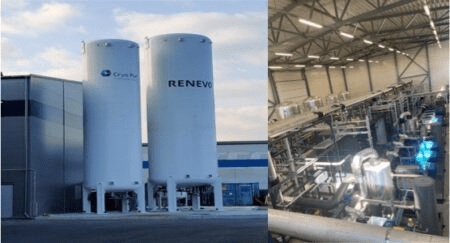
Specialist phase separator tanks are used to separate the two-phase liquid/gas mixture and transfer the liquid methane to storage tanks. This is a critical component within the plant and has a large impact on overall plant efficiency and performance giving a purity of over 99% for liquid biomethane. The phase separator tanks have to be carefully modeled and evaluated for pressure drop that determines the quality of separation. SimScale was used to validate physical test data and then to further optimize the process.
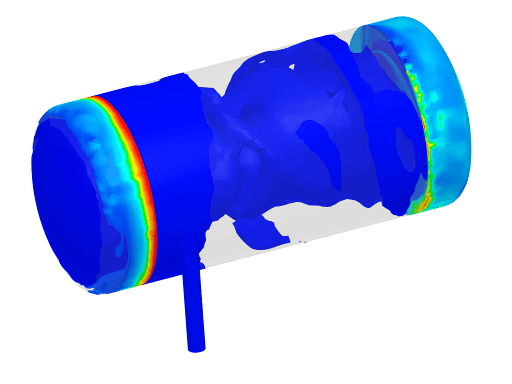
A transient (time-dependent) subsonic multiphase analysis was performed with automated mesh generation for a 2-phase fluid (gas and liquid nitrogen). The initial stage of the simulation was a fully gas mixture inside the tank and liquid nitrogen was added to the domain with a volume flow of 0.01362 m³/s at the velocity inlet. The pressure outlet has atmospheric conditions and the simulation was run for 3 seconds. The subsonic analysis type has a more robust simulation due to the efficient body-fitted mesh and, with lesser dependence on the transient timestep. Smaller time steps from 0.00025 s to 0.005 s were evaluated in the transient simulation to evaluate accuracy without compromising on computational resources or time.
I was new to using CFD simulation and SimScale. As an engineer at Cryo Pur, I was given some initial training and access to documentation and tutorials. I found SimScale very intuitive and easy to use, yet with all the powerful features you might expect in traditional desktop software. The live technical support is excellent and helped us meet project deadlines. I especially like how easy post-processing of the results is. At the end of the day we need to focus on the simulation outputs and insights that help us make design decisions and doing this even with many simulation scenarios is easy with SimScale.

Claire François
Engineer at Cryo Pur
The team at Cryo Pur was attempting to calibrate the use of the powerful subsonic analysis type in SimScale to their simulation workflow. Having used OPENFOAM for many years, they found that a typical multiphase simulation of the separator tanks took up to 26 hours and more than 100 core hours of computational resources. Using the subsonic multiphase approach in SimScale, this was lowered considerably to 68 minutes and 36.8 core-hours for a time-step of 0.00025 s and even further still to just 8 minutes simulation run-time and 5 core-hours for a time-step of 0.005 s.
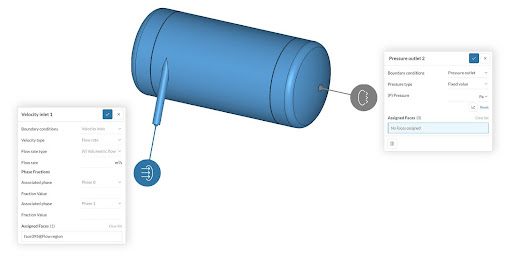
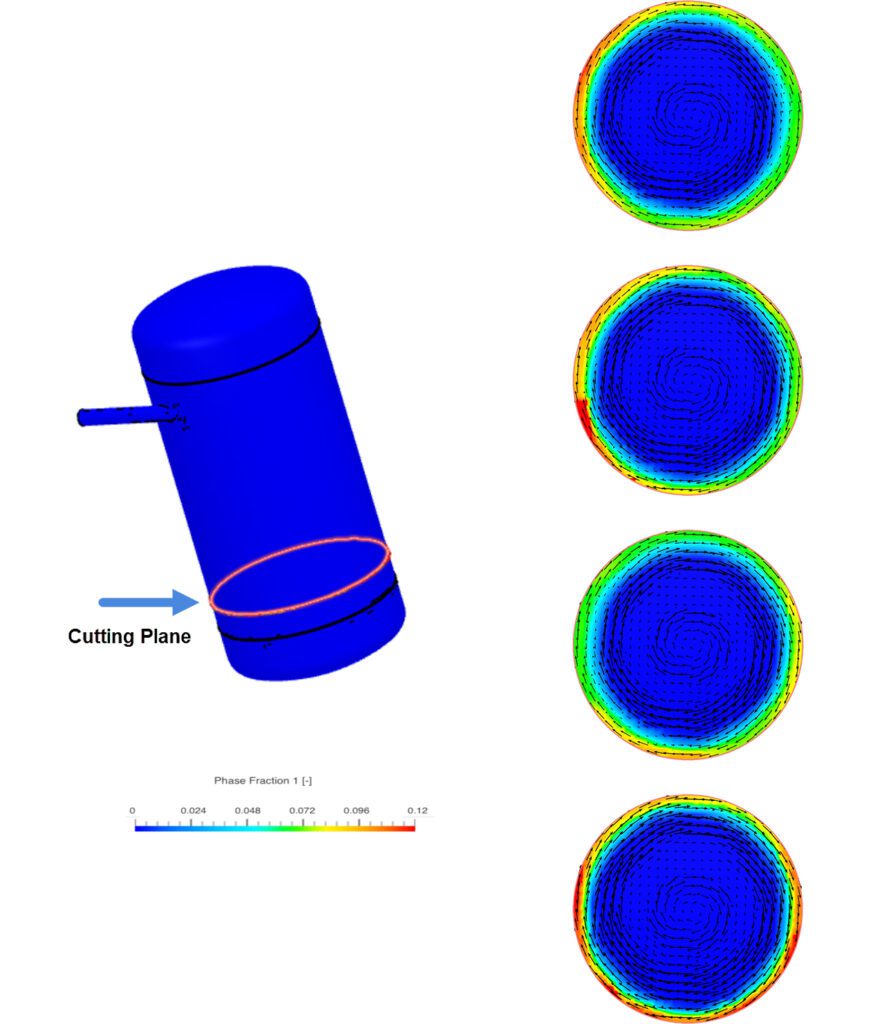
I’d been using Ansys Fluent for many years and am an experienced simulation user. SimScale is fast and easy to learn and very accurate when compared to legacy software tools. I found the cloud collaboration features very convenient and it let us do more simulation at the early stages of design which is something we never did before.

Joseph Toubassy
Process Department Engineer at Cryo Pur
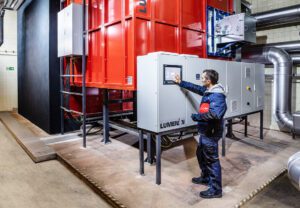
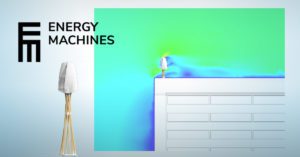
Sign up for SimScale
and start simulating now